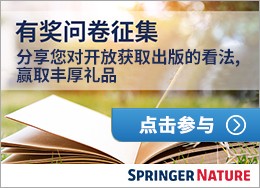-
Comrade Rutland: Anti-Stratfordian Conversations in Early Soviet Russia Shakespeare Quarterly Pub Date : 2022-04-21 Natalia Khomenko
-
Impossible Desire and the Limits of Knowledge in Renaissance Poetry. By Wendy Beth Hyman Shakespeare Quarterly Pub Date : 2022-03-24 Dianne Mitchell
-
Sweet Fooling: Ethical Humor in King Lear and Levinas Shakespeare Quarterly Pub Date : 2022-02-15 Lehnhof K.
In recent years, Scholars have increasingly put the works of William Shakespeare in dialogue with the ethical philosophy of Emmanuel Levinas. Currently, a search for “Levinas” and “Shakespeare” on Google Scholar returns about 16,600 results.11 The earliest examples of such work appeared at the start of the twenty-first century, which means that the philosopher himself, who died in 1995, did not live
-
“Do it not with poison”: Iago and the Killing of Desdemona Shakespeare Quarterly Pub Date : 2022-02-03 Sadowski P.
After the eavesdropping scene arranged by Iago (4.1.93–158), in which Othello listens with increasing horror first to Iago’s and Cassio’s lewd comments about Bianca (which he imagines to be about Desdemona), and then to Bianca’s angry outburst about the handkerchief she just received from Cassio, Othello’s immediate reaction is to kill both Cassio and Desdemona for their alleged secret liaison.11 His
-
Shakespeare and Stratford. Edited by Katherine Scheil Shakespeare Quarterly Pub Date : 2022-01-20 Enis C.
Shakespeare and Stratford. Edited by ScheilKatherine. New York: Berghahn Books, 2019. Illus. Pp. x + 106.
-
In Defense of Caliban: The Tempest and the Myth of the Black Rapist Shakespeare Quarterly Pub Date : 2022-01-18 Hilb B.
We know how myths work—through the impoverishment of history.—Hortense Spillers, Black, White, and in Color11
-
Shakespeare’s Body Parts: Figuring Sovereignty in the History Plays. By Huw Griffiths Shakespeare Quarterly Pub Date : 2021-10-25 Lisa Hopkins
Shakespeare’s Body Parts: Figuring Sovereignty in the History Plays. By GriffithsHuw. Edinburgh: Edinburgh University Press, 2020. Pp. xii + 148.
-
Error in Shakespeare: Shakespeare in Error. By Alice Leonard Shakespeare Quarterly Pub Date : 2021-10-18 Thomas M.
Error in Shakespeare: Shakespeare in Error. By LeonardAlice. Cham, Switzerland: Palgrave Macmillan, 2020. Illus. Pp. xx + 198.
-
Gaming the Stage: Playable Media and the Rise of English Commercial Theater. By Gina Bloom Shakespeare Quarterly Pub Date : 2021-10-13 Rutter T.
Gaming the Stage: Playable Media and the Rise of English Commercial Theater. By BloomGina. Ann Arbor: University of Michigan Press, 2018. Illus. Pp. xii + 276.
-
Shakespeare’s Domestic Tragedies: Violence in the Early Modern Home. By Emma, Whipday Shakespeare Quarterly Pub Date : 2021-10-13 Gillen K.
Shakespeare’s Domestic Tragedies: Violence in the Early Modern Home. By WhipdayEmma. Cambridge: Cambridge University Press, 2019. Illus. Pp. xii + 262.
-
Contributors Shakespeare Quarterly Pub Date : 2021-06-26
FAITH D. ACKER teaches composition at Southeastern Louisiana University. Her monograph, First Readers of Shakespeare’s Sonnets, 1590–1790 (Routledge, 2020), combines book history, manuscript studies, and editorial theory to show how early public and private readings of Shakespeare’s Sonnets can and should expand our current critical examinations of these poems. Her newest project, tentatively titled
-
Perilous Networks: Risk and Maritime News in The Merchant of Venice Shakespeare Quarterly Pub Date : 2021-06-13 Benjamin D VanWagoner
That many aduentures are incident to such as put themselues into the seruice on the Seas, I doubt not but is easily coniectured by all men, as wel such as haue with peril made triall therof. —Henry Roberts, Newes from the Leuane Seas (1594)11
-
Manuscript Precedents for Editorial Practices in John Benson’s Poems: Written by Wil. Shake-Speare. Gent Shakespeare Quarterly Pub Date : 2021-05-29 Faith D Acker
Recent scholarship has done much to restore the reputation of John Benson, who published the 1640 Poems: Written by Wil. Shake-Speare. Gent., a readable but revised collection of Shakespeare’s shorter poems. Initially disparaged by Edmond Malone, a handful of Malone’s contemporaries, and many nineteenth- and twentieth-century scholars, Benson has been more recently contextualized by Sasha Roberts,
-
Shakespeare and the 99%: Literary Studies, the Profession, and the Production of Inequity. Edited by Sharon O’Dair and Timothy Francisco Shakespeare Quarterly Pub Date : 2021-05-25 Fitter C.
Shakespeare and the 99%: Literary Studies, the Profession, and the Production of Inequity. Edited by O’DairSharon and FranciscoTimothy. Switzerland: Palgrave Macmillan, 2019. Pp. xiii + 286.
-
Impressive Shakespeare: Identity, Authority and the Imprint in Shakespearean Drama.By Harry Newman Shakespeare Quarterly Pub Date : 2021-05-21 Lauren Shohet
Impressive Shakespeare: Identity, Authority and the Imprint in Shakespearean Drama. By NewmanHarry. New York: Routledge, 2019. Illus. Pp. xvi + 200.
-
Catastrophizing: Materialism and the Making of Disaster. By Gerard Passannante Shakespeare Quarterly Pub Date : 2021-04-16 Glimp D.
Catastrophizing: Materialism and the Making of Disaster. By Gerard Passannante. Chicago: University of Chicago Press, 2019. Illus. Pp. x + 294.
-
Shakespeare on the Arabian Peninsula. By Katherine Hennessey Shakespeare Quarterly Pub Date : 2021-04-16 Dadabhoy A.
Shakespeare on the Arabian Peninsula. By HennesseyKatherine. London: Palgrave McMillan, 2018. Illus. Pp. xxii + 340.
-
Contributors Shakespeare Quarterly Pub Date : 2021-01-19
HEATHER DUBROW is John D. Boyd, SJ, Chair in Poetic Imagination at Fordham University; among the institutions where she taught previously are Carleton College and the University of Wisconsin-Madison. Her publications include seven single-authored volumes of literary criticism, a coedited collection of essays, an edition of As You Like It, and essays on higher education and teaching. Two full-length
-
Playful Letters: A Study in Early Modern Alphabetics. By Erika Mary Boeckeler Shakespeare Quarterly Pub Date : 2021-01-19 Iyengar S.
Playful Letters: A Study in Early Modern Alphabetics. By BoeckelerErika Mary. Iowa City: University of Iowa Press, 2017. Illus. Pp. xiv + 286.
-
Shakespeare and the Cultivation of Difference: Race and Conduct in the Early Modern World. By Patricia Akhimie Shakespeare Quarterly Pub Date : 2021-01-19 Eward-Mangione A.
Shakespeare and the Cultivation of Difference: Race and Conduct in the Early Modern World. By AkhimiePatricia. New York: Routledge, 2018. Illus. Pp. xii + 220.
-
Eclipse of Action: Tragedy and Political Economy. By Richard Halpern Shakespeare Quarterly Pub Date : 2021-01-19 E. Howard J.
Eclipse of Action: Tragedy and Political Economy. By HalpernRichard. Chicago: University of Chicago Press, 2017. Pp. viii + 214.
-
Shakespeare Dwelling: Designs for the Theater of Life. By Julia Reinhard Lupton Shakespeare Quarterly Pub Date : 2021-01-19 Dubrow H.
Shakespeare Dwelling: Designs for the Theater of Life. By LuptonJulia Reinhard. Chicago: University of Chicago Press, 2018. Pp. iv + 284.
-
Shakespeare’s Two Playhouses: Repertory and Theatre Space at the Globe and the Blackfriars,1599–1613. By Sarah Dustagheer Shakespeare Quarterly Pub Date : 2021-01-19 Matusiak C.
Shakespeare’s Two Playhouses: Repertory and Theatre Space at the Globe and the Blackfriars, 1599–1613. By DustagheerSarah. Cambridge: Cambridge University Press, 2017. Illus. Pp. x + 236.
-
Shakespearean Arrivals: The Birth of Character. By Nicholas Luke Shakespeare Quarterly Pub Date : 2021-01-19 Ko Y.
Shakespearean Arrivals: The Birth of Character. By LukeNicholas. Cambridge and New York: Cambridge University Press, 2018. Pp. vi + 254. Shakespeare’s Dramatic Persons. By CurtrightTravis. Madison, NJ: Fairleigh Dickinson University Press, 2017. Pp. x + 186.
-
Rape’s Hypothetical in Shakespeare’s Measure for Measure Shakespeare Quarterly Pub Date : 2020-12-28 Scozzaro C.
In a mostly faithful redux of the Ciceronian categories “who, what, where, with what help, why, how, when,” Edward Coke’s Institutes advise a plaintiff on how to make a credible complaint in a court of law.11 “[T]he count of the appellant,” he declares, “must comprehend these seven things: 1. The fact, 2. the yeer, 3. the day, 4. the hour, 5. the time of the king, 6. the Town where the fact was done
-
Who Owned the Blackfriars Playhouse? Shakespeare Quarterly Pub Date : 2020-12-28 Munro L.
In 1635 threeactors, RobertBenfield, EyllaerdtSwanston, andThomasPollard, petitioned the Lord Chamberlain to be allowed to purchase shares in the leases of the Globe and Blackfriars playhouses and, thereby, to take a larger cut of the profits.11 An answer to the petition was composed by a group of relatives of the Blackfriars playhouse’s former owner, Richard Burbage: his brother, Cuthbert; his widow
-
Contributors Shakespeare Quarterly Pub Date : 2020-12-28
GABRIEL BLOOMFIELD is Assistant Professor of English at the United States Naval Academy. His writing on early modern literature and the history of interpretation has appeared recently in English Literary History, Studies in Philology, and Studies in English Literature, 1500–1900.
-
Staged History and Alternative Sir Johns Shakespeare Quarterly Pub Date : 2020-12-06 Choate E.
“Ecce signum!”—behold the proof!—Falstaff proclaims in Act 2 of 1 Henry IV, presenting his “sword hacked like a handsaw” as incontrovertible evidence of the veracity of his account of the Gadshill robbery (2.4.162).11 His subsequent claim to have been ambushed by dozens of well-armed men explains the dents in his weapon as effects of a series of events in the past. The meaning of the damaged sword
-
The Bible on the Shakespearean Stage: Cultures of Interpretation in Reformation England. Edited by Thomas Fulton and Kristen Poole Shakespeare Quarterly Pub Date : 2020-12-02 Mary Jo Kietzman
-
-
Phantasmatic Shakespeare: Imagination in the Age of Early Modern Science. By Suparna Roychoudhury Shakespeare Quarterly Pub Date : 2020-12-02 Liza Blake
-
Playhouse Markings and the Revision of Hamlet Shakespeare Quarterly Pub Date : 2020-12-02 Margaret Jane Kidnie
-
-
Exegetical Shakespeare: Hamlet and the Miserere mei deus Shakespeare Quarterly Pub Date : 2020-12-02 Bloomfield G.
Though this be madness yet there is method in’t. —Hamlet, 2.2.202–311
-
The Battle of the Bard: Shakespeare on U.S. Radio in 1937. By Michael P. Jensen Shakespeare Quarterly Pub Date : 2020-12-01 Robert Sawyer
-
-
Mixed Faith and Shared Feeling: Theater in Post-Reformation London. By Musa Gurnis Shakespeare Quarterly Pub Date : 2020-12-01 Holly Crawford Pickett
-
Feeling Faint: Affect and Consciousness in the Renaissance. By Giulio J. Pertile Shakespeare Quarterly Pub Date : 2020-12-01 Jennifer Edwards
-
Dissent and Authority in Early Modern Ireland: The English Problem from Bale to Shakespeare. By Jane Yeang Chui Wong Shakespeare Quarterly Pub Date : 2020-12-01 Vimala C Pasupathi
-
Othello, Oserō, Washirō: Reflecting (on) Hegemony through Global Shakespeares Shakespeare Quarterly Pub Date : 2020-12-01 Erin Kathleen Kelly,W Aaron Tanner
-
Tasting Difference: Food, Race, and Cultural Encounters in Early Modern Literature. By Gitanjali G. Shahani Shakespeare Quarterly Pub Date : 2020-12-01 Mira ‘Assaf Kafantaris
-
Screening Gender in Shakespeare’s Comedies: Film and Television Adaptations in the Twenty-First Century. By Magdalena Cieślak Shakespeare Quarterly Pub Date : 2020-12-01 Melissa Croteau
-
Early Modern Theatre and the Figure of Disability. By Genevieve Love Shakespeare Quarterly Pub Date : 2020-12-01 Andrew Bozio
-
The Afterlife of Shakespeare’s Sonnets, By Jane Kingsley-Smith Shakespeare Quarterly Pub Date : 2020-12-01 Hannah Crawforth
-
Typographies of Performance in Early Modern England. By Claire M. L. Bourne Shakespeare Quarterly Pub Date : 2020-12-01 Joshua R Held
-
Shakespeare, Love and Language. By David Schalkwyk Shakespeare Quarterly Pub Date : 2020-10-29 Kottman P.
Shakespeare, Love and Language. By SchalkwykDavid. Cambridge: Cambridge University Press, 2018. Pp. x + 252.
-
Shakespeare’s Double Plays: Dramatic Economy on the Early Modern Stage. By Brett Gamboa Shakespeare Quarterly Pub Date : 2020-10-29 Engle L.
Shakespeare’s Double Plays: Dramatic Economy on the Early Modern Stage. By GamboaBrett. Cambridge: Cambridge University Press, 2018. Illus. Pp. x + 292.
-
Shakespeare and the Politics of Commoners: Digesting the New Social History. Edited by Chris Fitter Shakespeare Quarterly Pub Date : 2020-10-29 Carroll W.
Shakespeare and the Politics of Commoners: Digesting the New Social History. Edited by FitterChris. Oxford: Oxford University Press, 2017. Illus. Pp. xiv + 264.
-
Shakespeare and Conceptual Blending: Cognition, Creativity, Criticism. By Michael Booth Shakespeare Quarterly Pub Date : 2020-10-15 Hart F.
Shakespeare and Conceptual Blending: Cognition, Creativity, Criticism. By BoothMichael. Switzerland: Palgrave Macmillan, 2017. Illus. Pp. xxii + 258.
-
Hamlet and the Vision of Darkness. By Rhodri Lewis Shakespeare Quarterly Pub Date : 2020-10-15 Khan A.
Hamlet and the Vision of Darkness. By LewisRhodri. Princeton, NJ: Princeton University Press, 2017. Illus. Pp. xxii + 368.
-
Shakespeare and Domestic Life: A Dictionary. By Sandra Clark Shakespeare Quarterly Pub Date : 2020-05-15 van Elk M, Reviewed by.
Shakespeare and Domestic Life: A Dictionary. By ClarkSandra. London: Bloomsbury Publishing, 2018. Illus. Pp. xvi + 440.
-
-
-
The Dynamics of Inheritance on the Shakespearean Stage. By Michelle M. Dowd. Cambridge: Cambridge University Press, 2015. Illus. Pp. xiii + 290. Shakespeare Quarterly Pub Date : 2019-06-01 Margo Kolenda-Mason
-
-
-
-
The Oxford Handbook of Shakespeare and Performance. Edited by James C. Bulman. Oxford: Oxford University Press, 2017. Illus. Pp. xxvii + 670. Shakespeare Quarterly Pub Date : 2019-06-01 Katherine Steele Brokaw
-
“Love is not love”: Shakespeare’s Sonnet 116, Pembroke, and the Inns of Court Shakespeare Quarterly Pub Date : 2019-06-01 Mary Ellen Lamb
-
But That Was in Another County: William Shakespeare and the “Clayton Loan” of 1592 and 1600 Shakespeare Quarterly Pub Date : 2019-06-01 Alan H Nelson


























 京公网安备 11010802027423号
京公网安备 11010802027423号